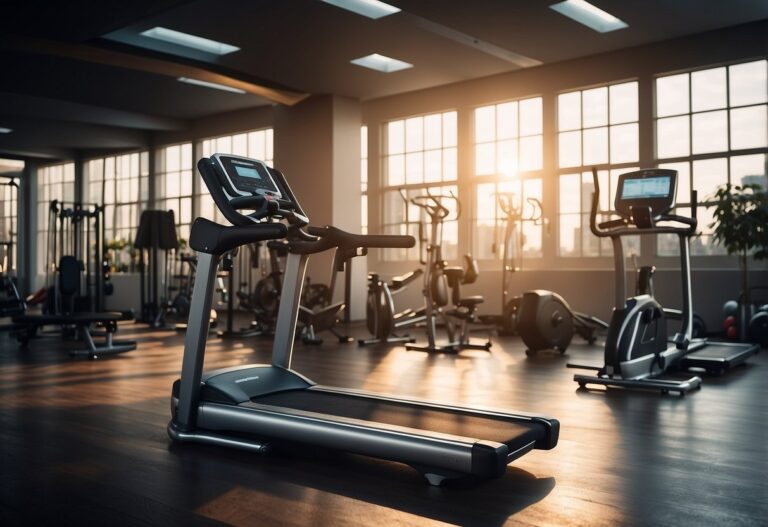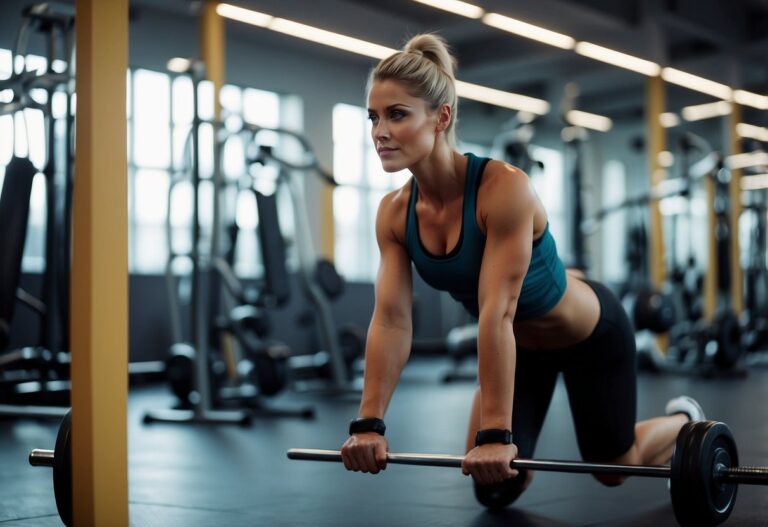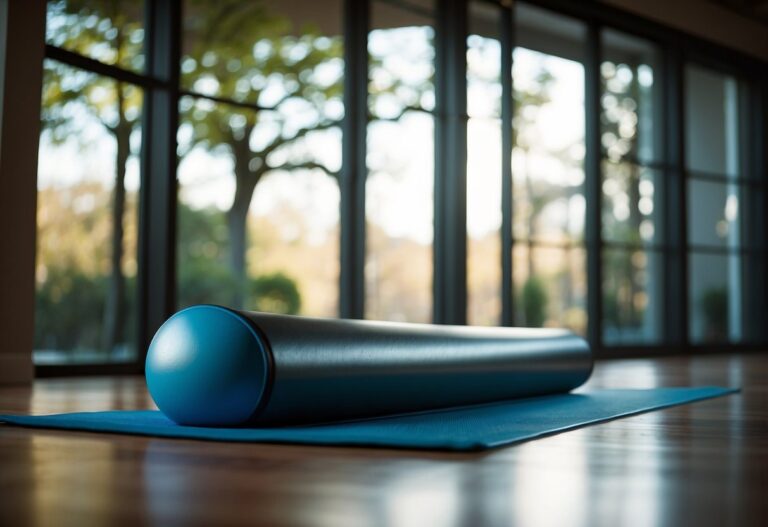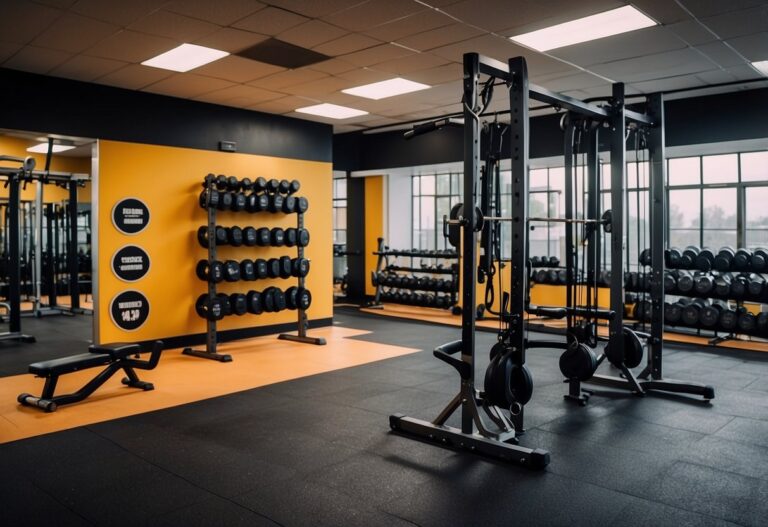Going to the gym is a great way to improve your fitness, build strength, and enhance overall well-being. Yet, simply stepping into the gym isn’t enough; it’s about making the most of your time there. Understanding how to maximise your workout efforts can lead to better results and improved physical health.
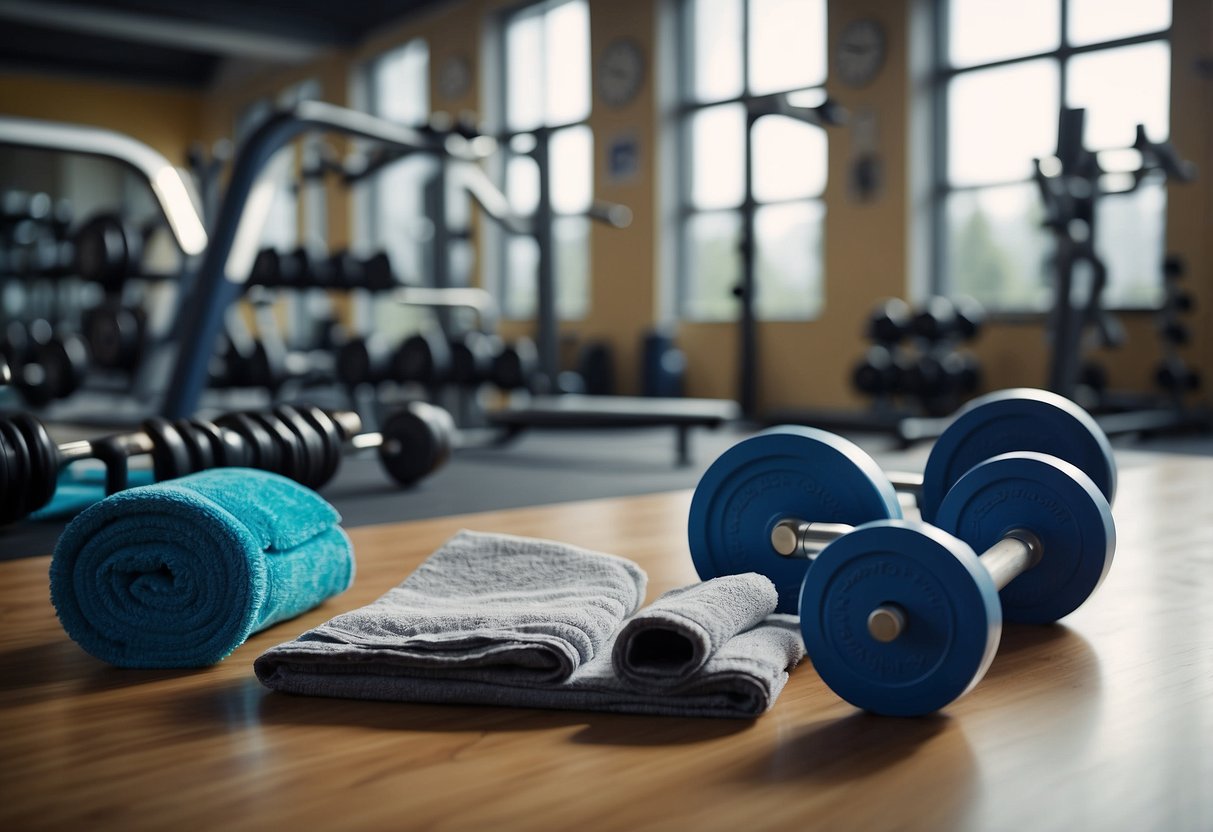
Whether you’re a beginner or a seasoned gym-goer, there are always new strategies to help you optimise your workouts. By focusing on effective techniques and habits, you can ensure each session is as productive as possible. Adopting these practices not only boosts your physical results but also keeps you motivated and engaged in your fitness journey.
Follow a Structured Workout Plan
Creating a workout plan is key to seeing progress at the gym. Without a clear structure, it’s easy to get lost and not make the gains you want.
Start by deciding how many days a week you can commit to working out. You can try a 3-day full-body workout if you’re short on time. If you’re more committed, a 4-day split might be a good fit.
Incorporate different exercises for cardio and strength training. For cardio, consider activities like running, cycling, or rowing. These exercises can help with endurance and overall fitness. For strength training, focus on major muscle groups with exercises like squats, deadlifts, and bench presses.
Always include a warm-up before your workout and a cool-down afterwards. This prepares your body for the workout and helps reduce the risk of injury.
Stay consistent with your plan but be ready to adjust as you progress. Tracking your progress can help you see what’s working and where you need to make changes.
Increase protein intake
Getting enough protein can help you see better results at the gym. Start by eating lean meats like chicken breast or turkey. These are low in fat but high in protein.
If you’re vegetarian or vegan, tofu made from pumpkin seeds is a great option. Each 4-ounce serving packs around 17 grams of protein. Consider adding fish to your meals too. Fish is rich in both protein and omega-3 fatty acids.
Yogurt is also a fantastic choice. It’s not only high in protein, but also provides probiotics that are good for gut health. Try having yogurt as a snack or mixing it into smoothies.
You can also boost your protein intake by using whey protein supplements. Studies show that taking whey protein before working out can help you burn more calories and build more muscle. This can make your workouts more effective.
Think about combining different high-protein foods to keep your meals interesting. Mixing things up can help you stick to your protein goals without getting bored.
Prioritise Compound Exercises
When you want to see improvements at the gym, compound exercises should be at the heart of your routine. These moves work multiple muscle groups at once, making your workouts more efficient.
For example, a push-up targets your chest, shoulders, triceps, and core. It’s excellent for building upper body strength and can be done almost anywhere.
Another efficient exercise is the deadlift. It helps strengthen your back, legs, and core. It’s one of the best moves for total body strength.
Incorporating exercises like the pull-up into your routine can also provide great results. This move works your back, biceps, and shoulders, helping to build a stronger upper body.
By focusing on compound exercises, you use your time effectively and see improvements faster. Make sure these powerful moves are part of your gym plan to maximise your gains.
Ensure Proper Hydration
Staying hydrated is key to getting better results at the gym. Your body needs water to function properly, especially during workouts. Drinking enough fluids helps maintain your energy levels and keeps your muscles working effectively.
Before you hit the gym, drink plenty of water. Aim to consume about 400-600 ml two to three hours before your workout. This helps ensure your body starts off well-hydrated.
During your workout, keep sipping water regularly. A good target is around 150-350 ml every 15-20 minutes. This can vary depending on the intensity and duration of your exercise.
After your workout, rehydrate to replace lost fluids. Drinking water or an electrolyte drink can help restore your body’s balance. It’s crucial to listen to your body and drink when you feel thirsty.
Keeping an eye on your urine colour is a good way to check your hydration levels. Aim for a pale yellow colour. If it’s dark, you need more fluids. If it’s clear, you might be overhydrating.
Adding electrolytes to your hydration plan can also make a huge difference. They help with muscle function and maintaining fluid balance. You can make your own electrolyte drink with simple ingredients like water, salt, and a bit of sugar.
Proper hydration is not just about drinking water. It’s about drinking the right amount at the right times to maximise your gym performance.
By following these tips, you can stay hydrated and get better results from your workouts.
Track your progress consistently
Keeping tabs on your progress at the gym is vital. One great way to do this is by taking progress photos. Snap some photos of yourself at regular intervals and compare them over time. It’s a simple and visual way to see how your body is changing.
Paying attention to your clothing fit is another easy method. Are your clothes getting looser? Maybe you need to buy a smaller size. This can be a good sign of progress.
Using physical measurements such as weighing yourself and taking body measurements can provide tangible evidence of your progress (learn more). Make sure to do this under similar conditions each time, like in the morning before breakfast.
Recording your training sessions is crucial. Keeping a diary of the sets, reps, and weights can help you track your improvements over weeks and months (find out more).
Incorporate rest days
To get better results at the gym, incorporating rest days into your schedule is essential. Rest days allow your muscles and joints to heal from the stress of workouts.
Skipping rest can lead to overtraining, which might cause injuries and even mental burnout. To get the best from your rest days, focus on eating healthy foods and staying hydrated.
Consider adding low-impact activities like walking or stretching to keep your body active without causing strain. Listen to your body and take rest when you feel sore or fatigued to sustain your fitness journey.
For more tips on scheduling rest days, check out this guide.
Focus on Form Over Weight
When you’re at the gym, it can be tempting to lift heavier weights to show your progress. Prioritising form, however, is much more important. Good form reduces injury risk and helps you work the right muscles.
Think about it: if you’re lifting heavy but with poor form, you might be harming yourself more than helping.
Concentrate on mastering the correct technique before increasing the weight. This will build a solid foundation and make future workouts more effective.
Ensure each movement is controlled and precise. Rushing through sets to lift more can compromise your form. It’s better to use lighter weights properly than to lift heavy and risk injury.
By focusing on form, you will make steady progress while staying safe and gaining the benefits of your workouts.
Include a Variety of Exercises

Trying different exercises in your routine is important. You might enjoy lifting weights, but it’s good to mix it up. Adding some cardio or yoga can help improve your flexibility and endurance. When you stick to the same routine for too long, progress can slow down.
Mixing things up keeps your workouts fresh and exciting. You could try incorporating compound exercises like squats and deadlifts. These work multiple muscles at once, making your workout more efficient.
Combining strength training with flexibility exercises, such as stretching or balance exercises, helps avoid plateaus and targets different muscle groups. This way, you keep seeing progress and stay motivated.
Utilise Progressive Overload
To get better results at the gym, you need to utilise progressive overload. This means gradually increasing the stress placed on your muscles during workouts.
Progressive overload can be achieved by lifting heavier weights over time. Start with a weight you can handle with good form. Once it becomes too easy, increase the weight.
You can also add more repetitions to your sets. For example, if you usually do 3 sets of 8 reps, try upping it to 9 reps for each set.
Changing your tempo is another way. Slowing down the movement of an exercise can make it more challenging. This works great for bodyweight exercises like push-ups and pull-ups.
Another method is decreasing your rest time between sets. Shorter rest periods can make your workouts more intense, helping to build muscle and increase endurance.
Stick to only one change at a time. This helps prevent injury and ensures you can maintain good form. For starters, focus on building strength before pushing for more complex changes. Check out this guide on progressive overload for more detailed advice.
Maintain a Balanced Diet
To get the best results at the gym, eating a balanced diet is crucial. This means getting the right mix of proteins, fats, and carbs.
Start with protein. Foods like chicken, fish, and beans help you build and repair muscles.
Don’t forget about healthy fats. Avocados, nuts, and olive oil are excellent choices. These fats provide energy and support your overall health.
Carbs are also important. Choose whole grains like oats and brown rice. They give you the fuel you need for your workouts.
Remember to drink plenty of water. At least 8 glasses a day will keep you hydrated and boost your metabolism.
Making smart food choices can make a big difference in your gym performance.
Understanding Gym Equipment
Knowing how to use gym equipment properly can make your workouts more effective and safe. This section will cover cardio machines, strength training equipment, and functional training tools in detail.
Cardio Machines
Cardio machines are great for improving cardiovascular health and burning calories. Treadmills, ellipticals, and stationary bikes are a few popular options. When using a treadmill, keep an eye on your posture. Stand tall and avoid leaning forward. Adjust the speed and incline to match your fitness level and goals.
Ellipticals are ideal for low-impact workouts. Focus on a smooth, flowing motion, and try to keep your arms and legs coordinated. Adjust the resistance to increase the intensity. Stationary bikes are perfect for leg workouts. Ensure the seat height is right for you; your leg should be slightly bent at the bottom of the pedal stroke. Adjust the handlebars for comfort and modify the resistance based on your fitness level.
Strength Training Equipment
Strength training equipment helps build muscle and increase overall strength. Free weights like dumbbells and barbells, as well as machines, are crucial for targeted muscle groups. When using dumbbells, focus on maintaining good form to prevent injuries. Start with lighter weights and work your way up as you get stronger.
Machines like the leg press or chest press guide your movements, which can be helpful for beginners. Pay attention to the instructions on each machine to ensure correct usage. Adjust the seat and backrest so that your posture aligns with the machine’s design. For instance, during a leg press, keep your back pressed against the pad and avoid locking your knees when extending.
Functional Training Tools
Functional training tools are designed to improve your everyday movements and enhance overall fitness. Tools like kettlebells, resistance bands, and medicine balls are versatile and can be used in various exercises. Kettlebells are great for dynamic movements like swings or snatches. When using a kettlebell, make sure to use your hips and legs for power rather than your arms.
Resistance bands provide constant tension on your muscles, which is excellent for building strength and stability. They come in different levels of resistance and can be used for exercises such as bicep curls, squats, or shoulder presses. Medicine balls are useful for explosive movements and can be integrated into exercises like slams or twists to work your core muscles.
By understanding how to use these different types of equipment, you can make your gym sessions more productive and enjoyable. Make sure to adjust each piece of equipment to your body’s specific needs to get the best results.
Creating a Workout Plan
Creating a workout plan involves setting clear goals and balancing different types of exercises to ensure a well-rounded fitness regimen.
Setting Clear Goals
Before you start any workout routine, it’s crucial to set clear goals. What do you want to achieve? Are you looking to build muscle, lose weight, or improve your overall fitness? Having specific, measurable, achievable, relevant, and time-bound (SMART) goals gives you a clear direction.
For instance, if your aim is to gain muscle, you might set a goal to increase your bench press by 10 kg in three months. If weight loss is your target, you could aim to lose 5 kg over the same period. Write down your goals and track your progress regularly. This helps you stay motivated and see how far you’ve come. Keep your goals realistic to avoid frustration and burnout.
Balancing Different Types of Exercises
A balanced workout plan incorporates various types of exercises to target different muscle groups and improve overall fitness. This usually includes cardio, strength training, flexibility exercises, and sometimes high-intensity interval training (HIIT).
Cardio exercises, like running or cycling, boost your endurance and heart health. Strength training with weights or resistance bands builds muscle and bone strength. Flexibility exercises, such as yoga and stretching, improve your range of motion and prevent injuries. Mixing these exercises keeps your routine interesting and ensures you’re not overworking one part of your body.
For example, you might schedule cardio on Mondays and Thursdays, strength training on Tuesdays and Fridays, and flexibility exercises on Wednesdays and Saturdays. This diverse approach maximises your results and keeps workouts fresh and engaging.
Optimising Nutrition for Performance
Proper nutrition is key to improving your gym performance. What you eat before and after your workout can significantly impact your energy levels, strength, and recovery.
Pre-Workout Nutrition
Eating the right foods before a workout gives you the energy to perform effectively. Aim to eat a balanced meal with carbohydrates, protein, and a small amount of fat about 2-3 hours before exercising. Carbs are important because they provide quick energy. Good options include a bowl of oatmeal, a banana, or a slice of wholegrain toast.
In the hour before your workout, you might want to have a small snack like a piece of fruit or a handful of nuts. This can keep your energy levels steady without making you feel too full. Hydration is also crucial, so make sure to drink plenty of water. One suggestion is to fill a 32-ounce (1 liter) bottle and drink it before your workout, as mentioned in the Sports Nutrition Guide.
Post-Workout Recovery
After you exercise, your body needs to recover and repair. Eating a meal with protein and carbohydrates within two hours of finishing your workout can help. Protein helps build and repair muscles, while carbohydrates replenish your energy stores. Good options include a chicken sandwich, a protein smoothie with fruit, or Greek yoghurt with honey.
Hydration remains important, so keep drinking water. A guide on optimising sports performance through nutrition suggests also consuming 30 to 60 grams of carbs during exercise for sustained energy, which can be followed by post-workout recovery foods. Include a mix of different food groups to ensure you’re getting a variety of nutrients to support overall recovery.
By paying attention to what you eat before and after your workouts, you can improve your performance and achieve better results at the gym.


